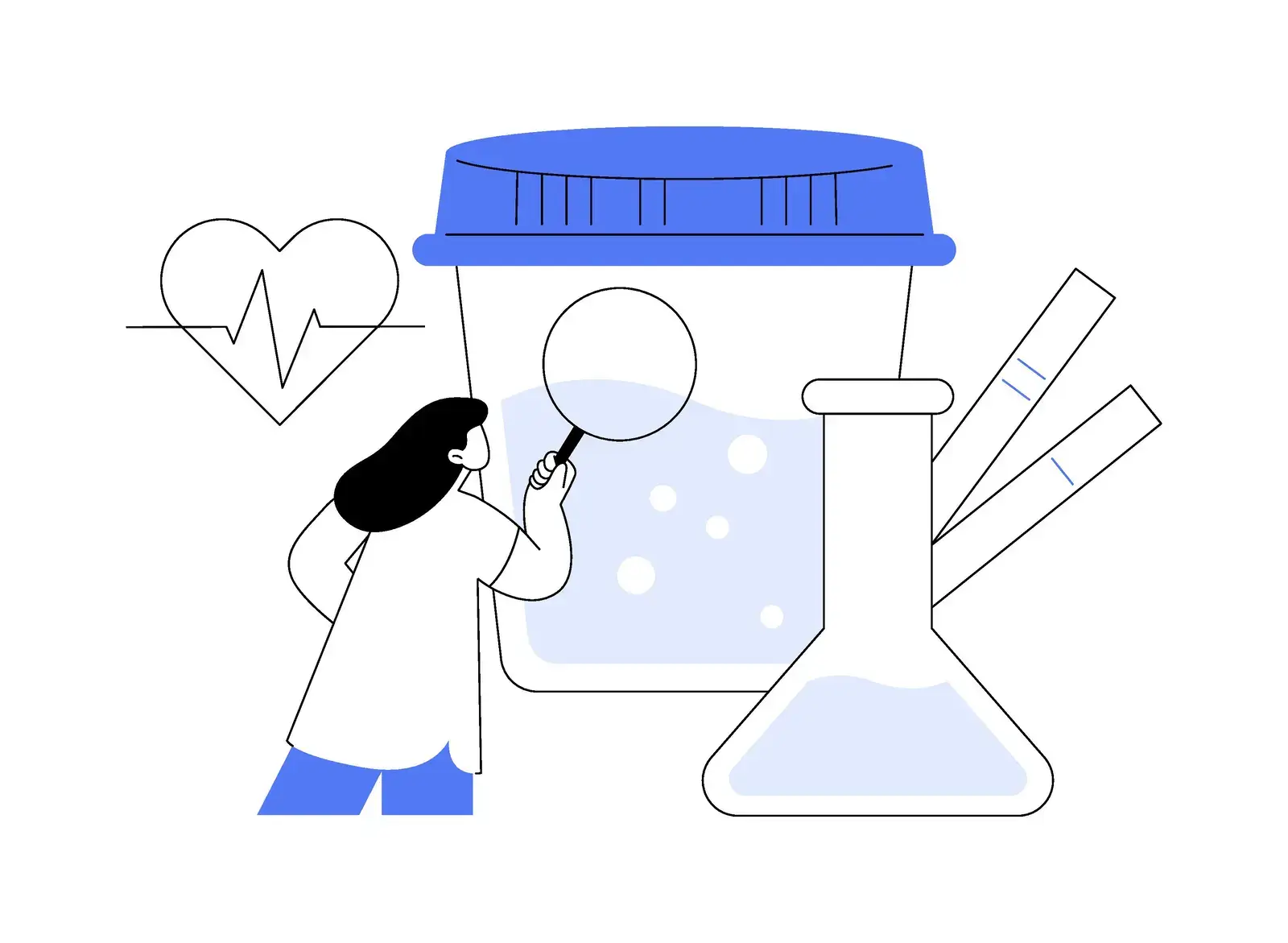Substances
How Long Does Ketamine Stay in Your System After Last Use?
Medically Reviewed By
Written By
Last medically reviewed September 15, 2025
Substances
Medically Reviewed By
Written By
Last medically reviewed September 15, 2025
Many Americans had never heard of ketamine until the death of “Friends” star Matthew Perry.[1] The medical examiner reported that Perry had been receiving “ketamine infusion therapy” for depression but accidentally overdosed, with more than a typical therapeutic dose found in his bloodstream.[1]
Although his death was later determined not to be directly caused by his therapy, public interest grew quickly. Many wanted to know why ketamine was found in his bloodstream after his death, if it was not the cause. People also searched for answers to questions such as “What is ketamine?” and “How is ketamine used for depression?” Unfortunately, many of these searches reveal conflicting answers, making it difficult to separate fact from speculation.
This blog will explain the uses of ketamine, how long it stays in your system after your last dose, and how long it can be detected on a drug test.
Ketamine is a drug classified as a dissociative anesthetic.[2] It has hallucinogenic effects and can distort a person’s perception of sight and sound, often leaving them feeling disconnected from reality. It is called a dissociative anesthetic hallucinogen because it can make patients feel detached from both their pain and their surroundings.[2]
In medical settings, ketamine is approved as a short-term anesthetic and is typically administered by injection.[3] It induces rapid sedation, which some describe as euphoric, although patients generally do not remember events that occur while under its influence. Unfortunately, this memory loss is one reason ketamine has been misused to facilitate sexual assault.[2] It is also used for pain relief.
A prescription form of ketamine, Spravato (esketamine), is available as a nasal spray for individuals with treatment-resistant depression.[2]
On the streets, both medical and illicit forms of ketamine are known by names such as Cat Valium, KitKat, Purple, Special K, Vitamin K, and Cat Tranquilizer.[2] Illicit ketamine is often adulterated and may be mixed into liquids or powders that can be snorted, smoked, or injected.
While under the influence, users may see, hear, or feel things that are not real. They may become agitated or depressed, experience memory problems, or lose consciousness. In some cases, individuals develop hallucinogen persisting perception disorder (HPPD), a condition that causes visual disturbances for weeks after ketamine use.[4]
To understand how long ketamine stays in the body, it is important to first look at its elimination half-life. The elimination half-life is the time it takes for 50% of a medication to be naturally cleared from the system.
According to StatPearls, ketamine given through intravenous administration has an elimination half-life of about 2 to 4 hours.[3] During this time, ketamine and its metabolites are excreted through urine. There is no data on the elimination half-life of ketamine taken in adulterated or abusive forms, because it is typically used only in controlled medical settings.
When administered as a nasal spray, ketamine (called esketamine) has a longer elimination half-life of 7 to 12 hours.[5] This form is prescribed to help individuals with treatment-resistant depression.
According to the authors of a study published at StatPearls, it typically takes about 4 to 5 half-lives for 94% to 97% of a drug to be eliminated from the body, which is considered effectively cleared.[6]
Since esketamine has an elimination half-life of 7 to 12 hours, it may take approximately 28 to 48 hours on the shorter end and 35 to 60 hours on the longer end for the drug to entirely leave the system. This means it will no longer be clinically effective, though it may still appear on a drug screening because of its leftover metabolites.
Some patient populations may experience a longer or shorter elimination half-life for ketamine than average. These include:[3]
Those with liver or kidney impairment may have difficulty eliminating the drug efficiently and could require dosage adjustments. However, the U.S. Food and Drug Administration (FDA) does not provide specific dosing guidance for these situations, so physicians must proceed with caution.
Children have been found to metabolize ketamine more quickly than adults and will require higher doses for effectiveness. In contrast, older adults metabolize the drug more slowly than younger adults and may need lower doses to ensure safety.
Ketamine can cause confusion and a dreamlike feeling.[7] Users may feel dizzy or drowsy for many hours after waking up from anesthesia and may have trouble thinking clearly. It is also possible to experience unusual thoughts or behaviors and to hallucinate afterwards.[7]
However, it is also possible to develop more serious side effects while under the influence of ketamine. The effects of ketamine include:[7]
If you experience any of the above side effects, contact your healthcare provider immediately.

Although your body will eliminate most of the ketamine within a few days, it can still be detected through specialized drug screenings. Traditional five-panel and six-panel drug tests do not screen for ketamine, so ketamine will not appear on these tests. However, 20-panel tests and tests specifically designed for ketamine can detect the drug and its metabolites.[8]
Ketamine and ketamine metabolites can usually be detected in urine for 2 to 4 days.[8] However, people who metabolize the medication more slowly may still test positive several weeks later.
Ketamine has shown promise in the medical field, particularly for individuals with treatment-resistant depression. However, using this medication in ways it was not prescribed or using it after obtaining it without a prescription can lead to serious health problems and addiction.
Individuals abusing ketamine may display several signs, including:
Ketamine addiction is dangerous and can affect every part of a person’s life, including their mental health, physical health, and social well-being. Getting help for ketamine addiction is the most effective way to overcome it and reduce the risk of overdose or relapse.
Drug addiction treatment options may include:
Seeking professional help for ketamine abuse is not a sign of weakness. It is the most productive step toward returning to a healthier, happier life.
For more information or assistance, contact Southeast Addiction Center today.
Yes, ketamine is a substance that can cause dissociation, hallucinations, and sedation. People who use ketamine may not remember anything that happens while they’re under its influence.
Yes, people who misuse ketamine can form a dependence on it.
The elimination half-life of ketamine is 2 to 4 hours. It is 7 to 12 hours for esketamine.
Ketamine withdrawal symptoms are caused by physical and psychological dependence. They include ketamine cravings and anxiety.
The detection window for a ketamine urine drug test is 2 to 4 days. Detection times can vary because of factors such as metabolism and age. It can also be detected through a blood test, hair follicle test, or saliva test, although the length of time it’s detectable varies.
[1] Johns Hopkins Bloomberg School of Public Health. (2024 Jan 26). What to Know About Ketamine. Retrieved from https://publichealth.jhu.edu/2024/what-to-know-about-ketamine on 2025 Sep 9.
[2] U.S. Drug Enforcement Administration. (n.d.). Ketamine. Retrieved from https://www.dea.gov/factsheets/ketamine on 2025 Sep 9.
[3] StatPearls. (2024 Jan 20). Ketamine. Retrieved from https://www.ncbi.nlm.nih.gov/books/NBK470357/#:~:text=Its%20elimination%20half%2Dlife%20is%20typically%202%20to%204%20hours on 2025 Sep 9.
[4] National Library of Medicine. (2022 May 6). Hallucinogenic Persisting Perception Disorder: A Case Series and Review of the Literature. Retrieved from https://pmc.ncbi.nlm.nih.gov/articles/PMC9120359/ on 2025 Sep 9.
[5] Frontiers in Psychiatry. (2023 Nov 22). Overcoming the Myths of Esketamine Administration: Different and Not Difficult. Retrieved from https://www.frontiersin.org/journals/psychiatry/articles/10.3389/fpsyt.2023.1279657/full on 2025 Aug 9.
[6] StatPearls. (2025 May 3). Elimination Half-Life of Drugs. Retrieved from https://www.ncbi.nlm.nih.gov/books/NBK554498/ on 2025 Aug 9.
[7] Drugs.com. (2023 Oct 6). Ketamine Side Effects. Retrieved from https://www.drugs.com/sfx/ketamine-side-effects.html on 2025 Sep 9.
[8] Request A Test. (n.d.). Ketamine Urine Drug Test. Retrieved from https://requestatest.com/Ketamine-Ketalar-Special-K-Jet-urine-drug-test on 2025 Sep 9.






